Just to keep you guys updated about my life in Tassie.
I'm doing fine. I've just submitted part 1 of my essay assignment
and sat for my zoology pract. test. I has been so far so good kind of mentality for me. Haha.. Therewere some mistakes here and there but overall, should be fine.
Aside with boring things:
The students doing the module on "Introduction to Aquaculture"
were scheduled for an "Oyster Farm visit on Friday." However, I'm exempted
on this module and wouldn't be able to go. So I decided to write an email
to the lecturer in-charge and guess what? He agreed to have me along for the tour.
And so the story goes...
Dr Ryan (the lecturer) was also the driver for the day. This guy simply looks too young to have a phD. Anyway, we make our way to Little Swan port on a van and upon alighting I had to jump back on the van to put on my Gortex jacket. The wind was simply too strong for me to take. Seriously, I find myself being pushed by the wind and I had to re-balanced myself every few minutes.
After putting on our wind-breaker and life jacket, we were all set to enter the speed boat. Regarding the life jacket that I'm wearing, I think they run out of adult sized ones.
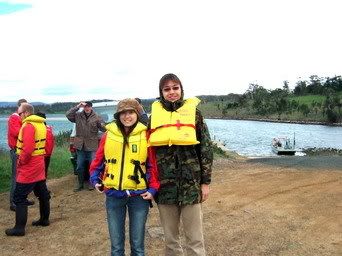
Sarah and I
Boarding the speed boat.
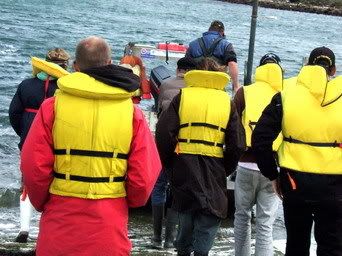
You could feel the wind slapping across your face as the boat moves. These are just some basic infrastructure of the farm.
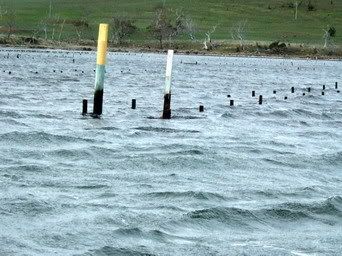
I know you guys might be bored with all the explanations of oyster farming. But trust me, you wouldn't get to experience it personally. It is not open to public.
Where the oyster seed stocks are raised. In between the bi-layer of wood, you will have around 1 million oyster seed-stock. Each individual seed will grow up to 1 full adult oyster.
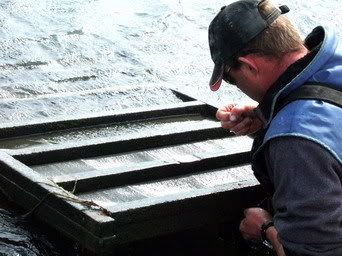
This is how they look like after 6 weeks old. The whitish area is how big they were when the farmers initially start them from.
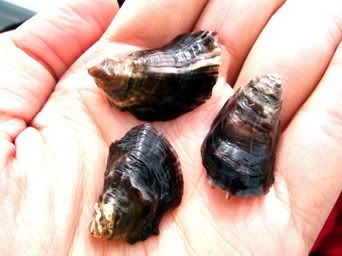
Oysters are filter-feeders meaning they take in micro particle food like algae. Little Swan port is an estaury (where fresh river water meets oceanic water)The change in density between the 2 water bodies will stir up nutrients-rich deep water from the sediments. These nutrients will then promote various types of algae bloom which serves as food for the oysters.
These oysters are close to maturation and have been harvested, graded and put back to the ocean for raising. A few more months and they will be ready for the plates.
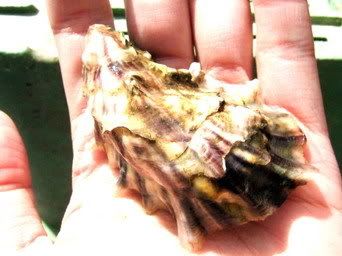
This is where they are raised at:
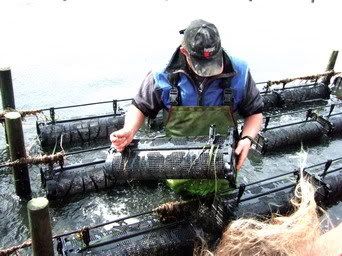
Pete explaining to us how they were raised and harvested. Fresh oysters were pryed open and given to students for sampling. Nah.. I don't like raw oysters.



I was looking at the oysters and the thought of having "Or-Jian" came into my mind. Hmmmm. I asked Pete how much he sells 10 oysters for. "$5 for a dozen" he said.
Cool.. Sure. I will like to have a dozen.
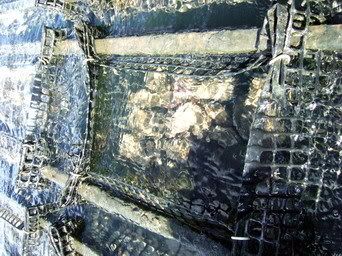
After bringing up 2 trays.. He said "You wouldn't have to pay for them." It's for you to share. Cool..
On the way back to Launnie, we stopped at Swansea for a toilet break. There were interesting bricks on the floor.

A man who chose the right path in the end.
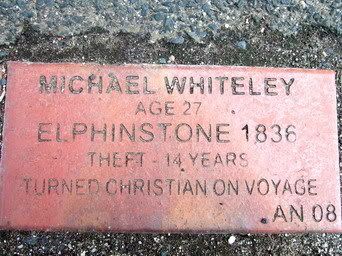
Never steal rabbits:
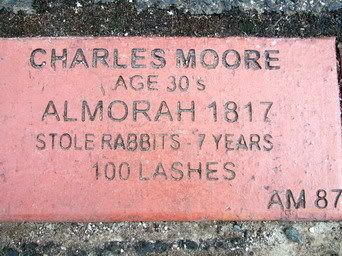
And if you ever want to steal... Choose silverwares:
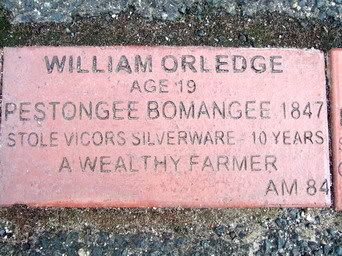
Finally... Do not receive stolen fats from someone. Take mine instead. It's free!
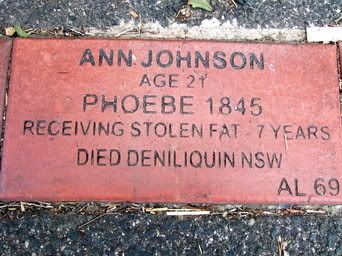
There were many other bricks, those featured were only 1% of them.
Bear getting grumpy because I refuse to sit near him.

Nah.. He is alright!

And so we made "Or-Jian" (Oyster Omelette) for dinner. It was delicious and the best I've tasted so far. I never really like oyster cause they usually come with a fishy smell, but these were perfect. Sarah and I had to open up the oysters personally and I cancelled my gym session for the day cause I felt that I had enough exercise from it.
Tata..
Till then...
No comments:
Post a Comment